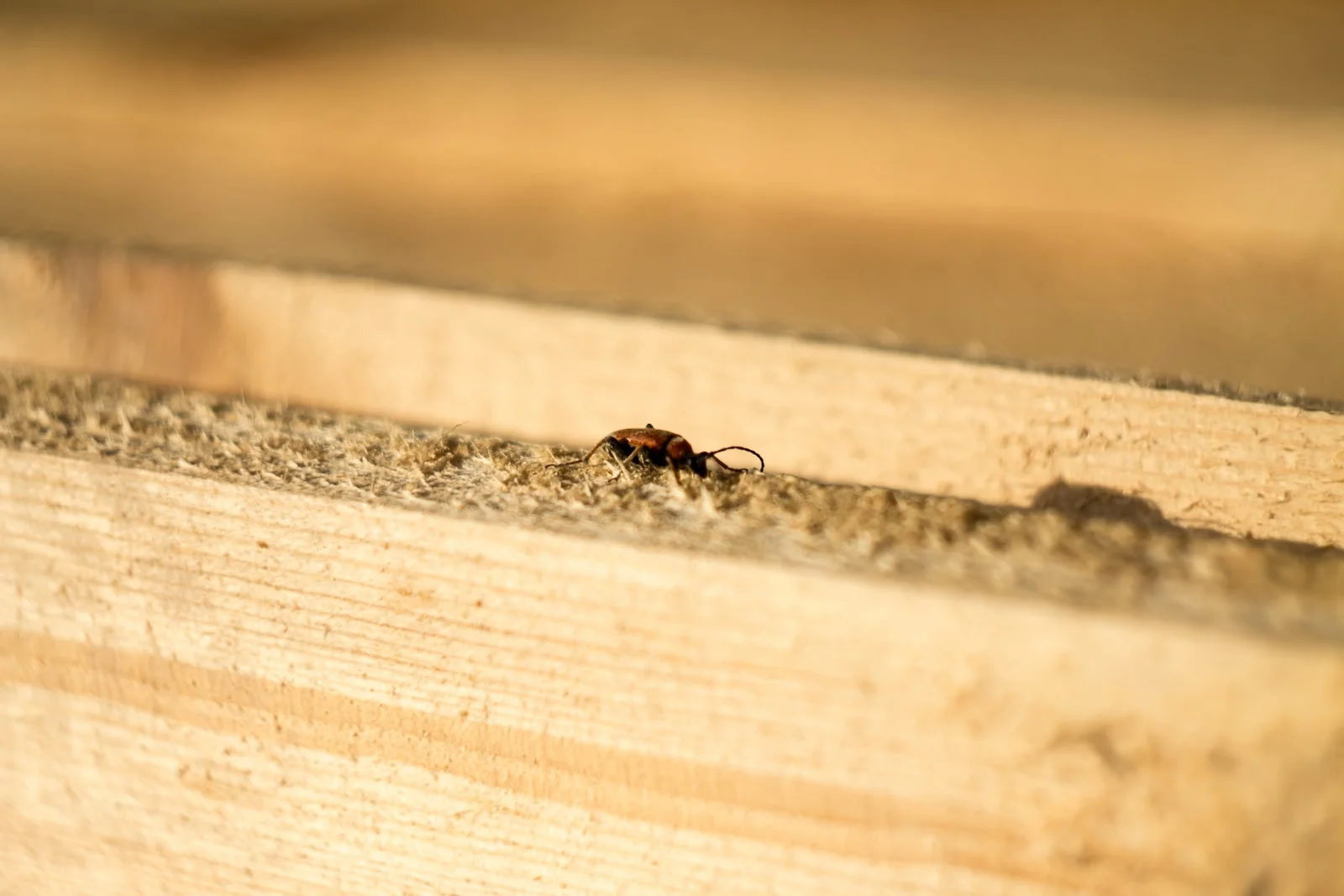UPDATED: JULY 10, 2023 | 3 MIN READ

Termites are a type of wood-eating insect that can cause significant damage to homes and structures. They feed on wood and other cellulose-rich materials like paper, cardboard, or cotton. They are considered one of the most destructive pests in the world, as they can cause significant damage to property and food sources.
Termites are typically found in damp areas with high humidity, such as around the foundations of buildings. They can also be found in moist soil, mulch, and decaying vegetation. The best way to know if you have termites is to see if you have any signs of their presence – for example, droppings or tunnels.
What do termites look like?
Termites are small, brown insects that look similar to ants. They have soft bodies, and their wings are not very visible.
There are over 2000 different types of termites, according to the National Pest Management Association. The most common are:
- Subterranean termites
- Formosan termites
- Dampwood termites
- Drywood termites
- Conehead termites
If you see termites in your home, it’s a high indicator that you have an infestation.
They may look different depending on the type you have.
- Some species, such as the conehead and damp wood termites, have cream bodies with dark heads.
- Subterranean termites, dry wood, and Formosan termites tend to be cream or brown.
Termites with wings
When you see swarms of flying termites, it could mean an infestation nearby. The males leave the colony to reproduce and set up shop elsewhere but will return soon after with new wings so they can continue feeding on wood as before without being seen.
Bugs that look like termites
There are a few bugs that do look similar to termites.
- Carpenter bees
- Carpenter ants.
- Acrobat ants
- Powderpost beetles
- Flying ants
Early warning signs of termites
You Find Tunnels
Termites make survive by eating wood and other cellulose-based materials in the ground. They create tunnels about 1/4-inch wide and 1/8-inch deep, leading from their colony to food sources. These tunnels can be found on the side of your house or under your foundation if you have an exposed basement or crawlspace.
You Noticed Damaged Wood
Termites can cause significant damage to wood and other building materials, including door frames and support beams. If you notice damaged wood in your home, it could be another sign that you have termites.
If you suspect you have termites, you must contact an exterminator immediately to prevent further damage.
How to Prevent Termites
Termites are among the most destructive pests to property, costing homeowners billions of dollars in damage every year. They can be challenging to spot and even more challenging to get rid of. To prevent termites, experts recommend that homeowners do a few things:
Keep Attractive Areas Clear
Keeping the home’s foundation free from debris, mulch, and woodpiles can be challenging. These materials can lead to rotting sills and foundation walls. They also require regular maintenance and upkeep to prevent the buildup of weeds and pests such as termites.
Block the Entrances
Termites typically enter through cracks or gaps and start feeding on the wood in your home. You can prevent termites from entering your home and causing damage in many ways.
You can prevent termites from entering your home by monitoring for cracks in the foundation, filling any holes or gaps in the wood, removing any rotting wood, and making sure there is no standing water near the house.
Call the Professionals
If you ever suspect your home is infested with termites, you must call a professional exterminator. The range of treatments they offer can vary depending on the severity of the infestation and its location.
For example, if you have a minor infestation, you may only need to do one treatment, while a more severe infestation may require two or more treatments. Call your insurance company to see if you have coverage for termites.